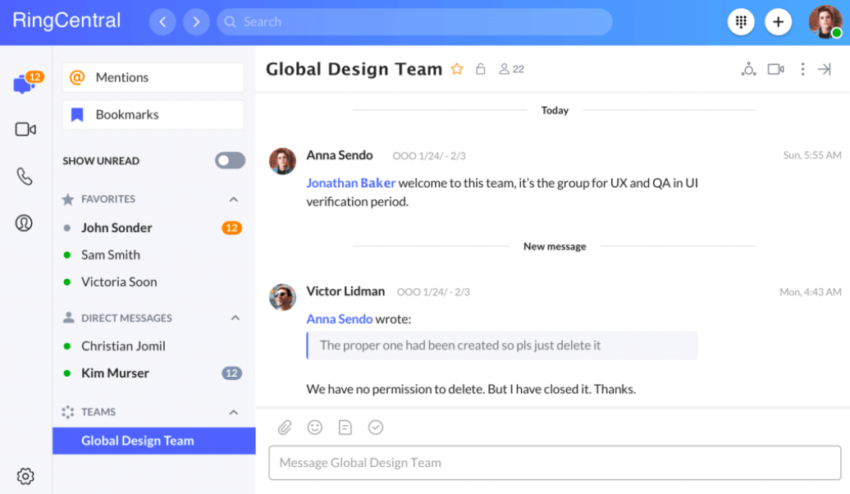Nothing is certain for businesses these days.
Heck, look no further than 2020 as evidence.
Between a global pandemic and looming fear of a long-term financial recession, businesses are rightfully concerned about emergencies.
But ask yourself: is your business prepared for a worst-case scenario?
If you’re not 100% sure, it’s time to come up with a continuity plan.
Because startups are often on shaky ground as is. It’s arguably more important than ever to invest in business resiliency and protection for your business. So, coming up with a response and recovery strategy is your first step.
To help ensure your company’s survival, we’ve put together a business continuity plan template to help you prepare for just about any “what-if” disaster.
In this post, we’ll go over:
- What is a business continuity plan?
- Why do startups need a continuity plan?
- What are some situations where a business continuity plan is necessary?
- What are the key elements of a business continuity plan?
- Additional tip implementing your business continuity plan
✍️ Want to start making a plan for your business—just in case? Download this free business continuity plan template.
What is a business continuity plan, anyway?
A business continuity plan is an internal guide that helps companies navigate emergency situations. An emergency constitutes anything that could significantly disrupt your business’s process or cash flow.
The goal of a continuity plan is simple: outline the specific, must-do steps to keep your company afloat during a disaster.
Think of your business continuity plan as a sort of “CASE OF EMERGENCY, BREAK GLASS” document. You never want to think about having to put it into action, but having one handy can be a life-saver.
Although continuity plans are traditionally reserved for corporations and bigger businesses, startups can (and should) write them as well.
Why do startups need a continuity plan?
Conventional wisdom tells us that many small businesses lack concrete emergency plans.
Meanwhile, those that do have them mostly only cover short-term disruptions lasting a week or two.
Yikes.
We kind of get it, though. If you’re confident in your ability to do business, why assume the worst? Time is tight and likely so is your budget. (And don’t forget about your investors, who will likely want to see a continuity plan too.)
Spending time on a continuity plan might not seem like a top priority, but let’s look at some reasons why doing so is worth it.
🤝 Is your tech startup’s team collaborating as effectively as it could be? What should you look out for before you start scaling in earnest?
Like it or not, startups are particularly emergency-prone
There’s plenty of room to debate the oft-cited high failure rate of startups.
However, there’s no denying that bootstrapped companies are often walking on thin ice. Even a seemingly “minor” emergency could set off a domino effect that takes your business under.
Accidents and emergencies happen. While your business might be resilient to COVID-19 and its economic impact (for now), you may not be as fortunate during the next crisis (whatever and whenever it may be).
Nobody could have predicted the trajectory of 2020. That said, you can bet that businesses with continuity plans were happy to have them.
A plan gives your stressed-out workers much-needed peace of mind
As noted in our guide to startup productivity, the average startup employee has a lot on their plate.
Lacking any sort of emergency plan piles on an extra layer of stress for your employees. Working outside the office can create a disconnect and make the team feel less involved in important strategic decisions. This rings true whether we’re talking about their professional or personal well-being.
Having to constantly worry about “what-if” can’t be good for employee engagement. Your team should be empowered to do their jobs with confidence, not constantly fearing crisis mode.
And in times of crisis, communication is key. Will your team be able to communicate with each other, no matter where they happen to be working from? Will your execs and leadership team be able to join an online conference call or video meeting with everyone to calm their fears and provide a clear plan of action?
Your continuity plan must include some type of guidelines for how information will be disseminated, whether that’s through a company group chat…
Or a conference call with 100+ team members. Even better if you have the flexibility to choose between these options in the same app:
Coming up with a continuity plan forces you to assess your weaknesses
Consider that emergency plans are a collaborative effort among startups.
Are they fun to write? No.
Can they highlight your business’s weaknesses and help you prioritize your most crucial processes? Absolutely.
Continuity plans are a unique opportunity to put your business under a microscope to figure out what’s absolutely essential for you to stay afloat. Doing so is an eye-opening experience to help you understand what’s at the core of your business.
What are some situations where a business continuity plan is necessary?
Good question, especially if you’re still skeptical.
COVID-19 has dealt a blow to the small business community, but most startups have fared better than anticipated.
Don’t let this lead you into a false sense of security, though. Below are some examples of real-world emergencies that a continuity plan can address.
Economic recession
Whether you’re looking to get funded or sell directly to consumers, a struggling economy is obviously bad news. This is especially true if your product or service is dependent on discretionary income or is deemed a luxury.
Cyber attacks
Security breaks and hacks plague nearly 50% of small businesses and startups certainly aren’t immune, either. Experiencing a sudden shutdown of your servers, customer finances, or communication could be disastrous even over the short-term.
Natural disasters
From earthquakes in California to storms on the Gulf Coast, 40% of businesses that encounter natural disasters directly fail to reopen after them. While remote work is arguably easier than ever in case of an in-person disruption, a response plan is crucial to getting back on your feet.
Sudden service shutdowns
Let’s say your startup’s service centers around another SaaS tool or a social media platform. What happens in case of a sudden policy change or shutdown? Is it possible to pivot? When your business is totally dependent on platforms beyond your control, such an emergency is always possible.
Unexpected firings or walkouts
Not all emergencies happen beyond your business’s walls. From internal conflicts to essential employees leaving your company en masse, your company’s survival shouldn’t hinge on a specific worker.
Keep in mind that all of these scenarios aren’t meant to freak you out! We’re just trying to highlight why continuity plans are worth putting together.
What are the key elements of a business continuity plan?
Putting together a continuity plan from scratch can be daunting.
But most continuity plans follow a relatively similar structure, and the main thing to remember is to focus on the essentials and format your plan in a way that makes sense for your business.
But before putting pen to paper, make sure you do all of the following to make sure your disaster blueprint is foolproof.
Define the purpose of your plan (“What will this plan do?”)
Generally speaking, corporations’ continuity plans will have multiple continuity plans for a variety of situations (“If A happens, we do B. If C happens, we do D,” etc).
Most startups can use a more general continuity plan that covers a variety of emergencies. Since you’re likely already strapped for time and resources, this approach also has the benefit of being much less time-consuming. You could also use a template.
Even so, the length and scope of your continuity plan should be customizable based on your business. If you’re a bootstrapped startup that pretty much does everything in the cloud, your plan will be much simpler than a company with external servers, an IT team, sensitive customer data, and so on.
Assess the threats relevant to your business (“What risks do we face?”)
Here, you’ll assess the most pressing threats that face your business.
While many of the threats discussed earlier are possible, their relevance and likelihood of happening vary from company to company.
For example, a distributed team might not have to worry much about natural disasters. Maybe your business is seemingly “recession-proof.” That said, there are likely other “what-if” situations that you should know already and prepare for.
This speaks to the importance of talking to the rest of your team when it comes time to write your plan. Your colleagues and coworkers might have firsthand insight regarding what it’s like to recover from an emergency. They likewise might be able to predict problems that you wouldn’t have thought of yourself.
Run an impact analysis (“Which risks affect our essential functions?”)
Here you’re going to outline your business’s most essential functions (think: your website, servers, payment processor, campaigns, other automations).
Based on these processes, you can define, if impacted, what would have the worst effect on your business. Businesses typically rank impact on the following scale:
- Minor
- Moderate
- Major
- Critical
Ranking these processes allows you to figure out which ones are your priorities for protecting, responding, and recovering in case of an emergency. This will help you avoid analysis paralysis and encourages you to start moving during a crisis rather than let things get worse.
Decide on essential roles for carrying out your plan (“Who’s involved?”)
While not all of your employees will necessarily be involved with writing your continuity plan, you should define which hands are going to be on deck when a crisis goes down. Some employees might not be affected while others will have to take on totally new roles while you’re in recovery mode.
As noted earlier, your plan shouldn’t be written in such a way that its ability to roll out is contingent on a specific person. Given how high turnover is in the startup world, you should consider writing a more general plan that could be understood by newer hires alike.
Outline your action items (“How do we respond and recover from _____?”)
Lastly, you’re going to need to outline your action items for responding and recovering from any given emergency. This is your step-by-step blueprint of what to do in case of an emergency.
Additional tips for implementing your business continuity plan
Now, let’s look at some key tips to making your plan and putting it into action.
Having a unified communications platform—from day 1, not day 100—is crucial for the creation and rollout of your continuity plan. Not only do you need to be able to hash out the details of your initial draft but also share and communicate it to employees once the plan is in place.
This is where a tool like RingCentral comes in handy. Features baked into our communications suite allow you to collaborate on documents as you share them among your team members for necessary revisions. Additionally, the video meeting platform allows you to connect remotely to discuss any emergency—from anywhere—as it occurs:
Also, you might consider roleplaying or at least discussing “what-if” scenarios among your team. The idea here isn’t to test people or put them on the spot. Instead, you’re simply looking to pick their brains and figure out what your company’s disaster response would realistically look like.
Ready to put together your business’s continuity plan?
Listen: nobody wants to have emergencies hanging over them all the time. Your business is no different.
And that’s all the more reason to put together your continuity plan ASAP.
With these tips and tools (like RingCentral!), you can effectively prep your business regardless of what comes your way.
Originally published Dec 09, 2020, updated Jun 06, 2024






